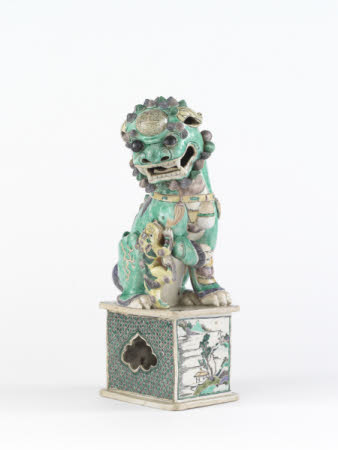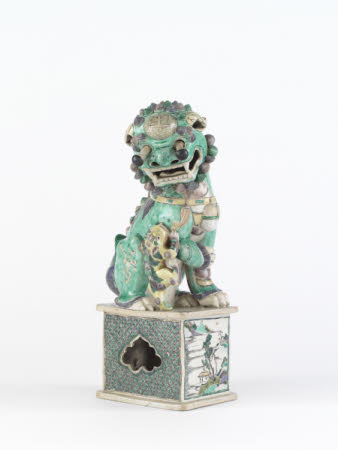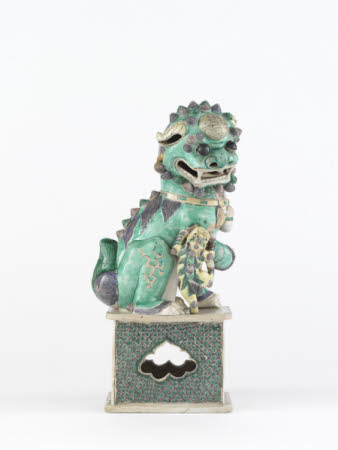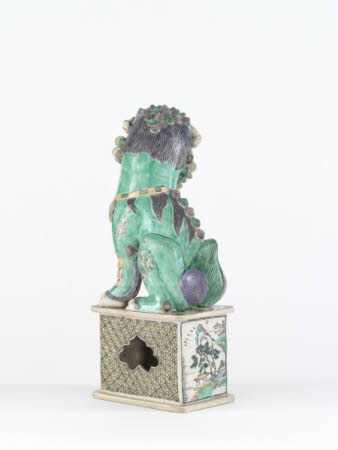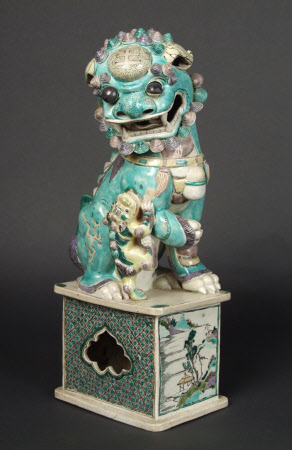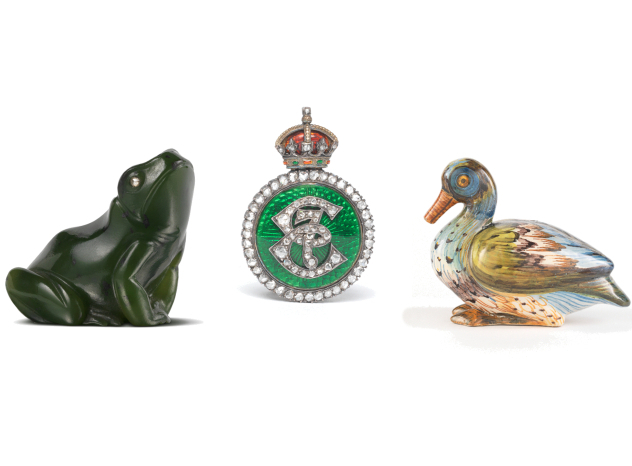Figure
Category
Ceramics
Date
1662 - 1722
Materials
Enamelled and lead-glazed porcelain
Measurements
36 cm (H), 16.3 cm (W), 14.5 cm (D)
Place of origin
Jingdezhen
Order this imageCollection
Polesden Lacey, Surrey
NT 1245636
Caption
Images of lion guardians came to China from India in the third century, along with the introduction of Buddhism. But as Chinese artisans had never seen real lions, the versions they produced in stone and porcelain tended to look playful rather than fierce.
Summary
Porcelain figure, Chinese, Kangxi period (1662-1722). Representing a female Buddhist lion (previously sometimes known as 'Dog of Fo' in the West) and her cub, on a rectangular plinth, decorated with turquoise, yellow, green, aubergine and black enamels on the biscuit (or unglazed surface) and with a transparent lead glaze on the paws and other details, the lion with the character 王 wang ('royal') on its forehead, the plinth with landscapes at the front and back and a diaper pattern on the sides which are punctuated with lobed and pointed openings, probably made in Jingdezhen, Jiangxi province, China.
Provenance
Bequeathed to the National Trust by Dame Margaret Greville DBE (1863-1942).
